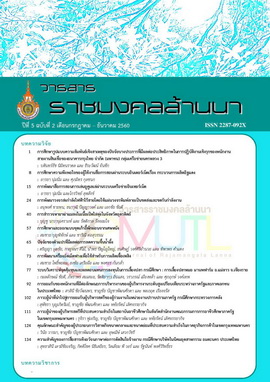Effect of Variables on Honey Dehydration
Main Article Content
Abstract
Honey, in general, presents significant handling problems in mass production operations or consumption due to its viscosity and stickiness. There is a strong and constant consumer demand for dried honey that is convenient to be consumed or used in the food industry. This research aimed to study factors affecting the honey dehydration. After dehydrating process, honey was so intense and can be stored for long time, requiring the needs of consumers. Honey sample used in the experiments was from longan orchard and harvested in February-April 2014 which its initial concentration was 50% Brix dehydrating down to 80% Brix. Two dehydration conditions were at atmospheric pressure and vacuum pressure. With the first condition, there were 2 boiled water temperatures of 60 and 80°C to be tested. As for the vacuum condition of 15 cmHg, the tests were done at 28 (room temperature) and boiled water temperatures of 40, 60 and 80°C. Results showed that the boiled water temperature of 80°C at atmospheric pressure gave the best evaporation rate of 21.41 gram per hour. On the other hand, the 60°C boiled water temperature at the vacuum condition resulted the best evaporation rate of 13.12 gram per hour. The difference between water content of honey (%Water) obtained from experiment and model at atmospheric and vacuum pressures were ±4.3% and ±3%, respectively. The sweetness and moisture content in dried honey were related with boiled water temperature and the dehydration time in term of the polynomial function. In order to have an acceptable honey dehydration, due to the aroma and flavor components and color conserved, the boiled water temperature for evaporation process should be set at 60°C at atmospheric pressure.
Article Details
How to Cite
Moonchai, D., Seemai, K., Panyoyai, N., Wongsiriamnuay, T., & Khamdaeng, T. (2017). Effect of Variables on Honey Dehydration. RMUTL Journal of Business Administration and Liberal Arts, 5(2), 65–72. retrieved from https://so05.tci-thaijo.org/index.php/balajhss/article/view/94745
Section
Research article
บทความวิจัยนี้เป็นของลิขสิทธิ์

